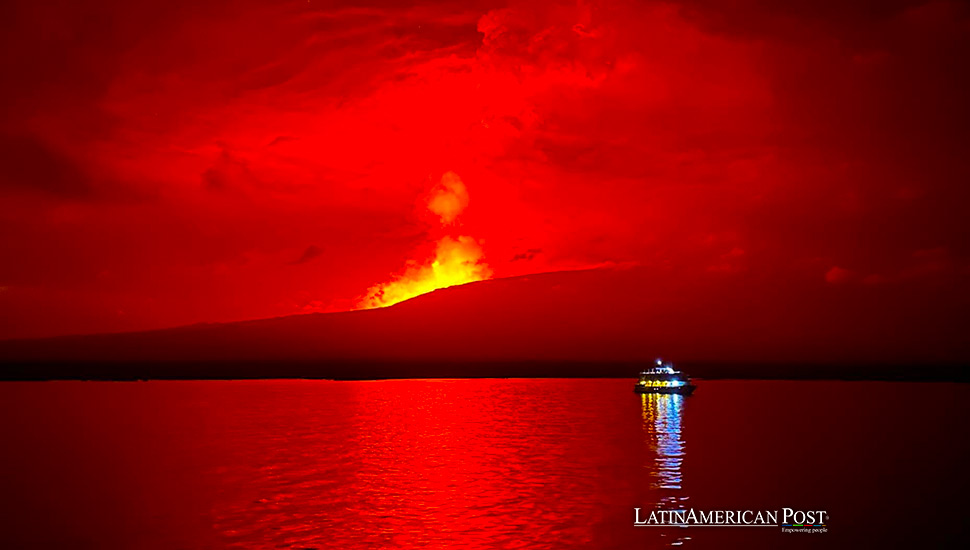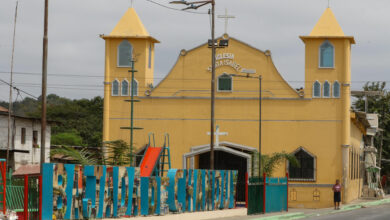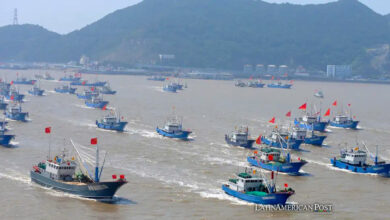Ecuador’s La Cumbre Volcano Erupts in Galapagos: No Immediate Threat to Human Life or Tourism

Ecuador’s La Cumbre volcano, situated in the Galapagos archipelago, has begun erupting, with officials confirming no immediate risk to human life or the islands’ tourism industry due to the volcano’s remote location.
La Cumbre Volcano Erupts on Fernandina Island
In a striking demonstration of nature’s force, La Cumbre volcano on the Galapagos Islands’ Fernandina Island has erupted, again casting a spotlight on Ecuador’s rich volcanic landscape. Through its environment ministry, the Ecuadorian government reported the eruption on Sunday, reassuring locals and the international community that this natural event posed no immediate danger. The absence of a human population on Fernandina Island significantly reduces the risk of casualties and property damage, providing a unique opportunity for scientists to study volcanic activity without the overarching concern for human safety accompanying eruptions in populated areas.
The Galapagos archipelago, renowned for its unique biodiversity that inspired Charles Darwin’s theory of natural selection, is also famous for its volcanic activity. La Cumbre, standing tall on the uninhabited Fernandina Island, is among the numerous active volcanoes that dot the landscape of this UNESCO World Heritage site, located nearly 1,000 km (600 miles) from the Ecuadorian mainland. This remote location, combined with the archipelago’s vigilant monitoring systems, ensures that the volcanic activity can be observed and studied with minimal human interference.
A Technological Triumph for Volcanic Observation
The eruption was detected through satellite systems that identified gas emissions and thermal anomalies, a testament to the advanced technological tools at the disposal of volcanologists today. These systems allow for real-time monitoring of volcanic activity, ensuring that any potential threat to the surrounding areas can be swiftly addressed. Despite the eruption, the Ecuadorian environment ministry has confirmed that tourism to the Galapagos Islands, a crucial component of Ecuador’s economy, will not be affected. This assurance is vital for maintaining the island’s status as a premier eco-tourism and scientific research destination.
Social media platforms have been abuzz with images of the eruption, showcasing glowing lava streams carving their path through the darkness. These visual accounts provide a stark reminder of our planet’s dynamic and ever-changing nature. La Cumbre’s latest eruption, potentially more significant than those recorded in 2020 and the years preceding, offers invaluable data for researchers studying volcanic behavior and its environmental impacts.
Galapagos Islands as a Model for Disaster Preparedness
The Galapagos Islands’ isolation and the Ecuadorian government’s proactive approach to monitoring and reporting volcanic activity serve as a model for disaster preparedness and environmental stewardship. This event underscores the importance of balancing human interests with the preservation and study of natural phenomena.
Alos read: Restoring Floreana is a Monumental Conservation Endeavor in Ecuador’s Galápagos Islands
The eruption of La Cumbre volcano is a reminder of the awe-inspiring power of nature and the need for continuous vigilance in monitoring our planet’s geological activities. While the immediate absence of danger is a relief, the situation highlights the broader challenges and responsibilities faced by countries like Ecuador, home to some of the world’s most active and fascinating volcanic landscapes. As the Galapagos Islands continue to attract scientists and tourists alike, the eruption of La Cumbre volcano stands as a testament to the enduring allure and mystery of these enchanting islands, where the forces of nature continue to shape the environment in profound and visible ways.





